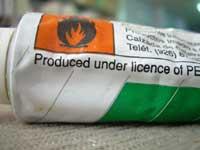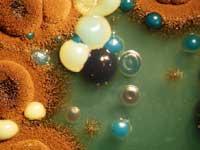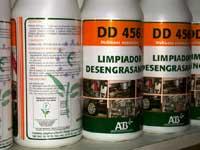On sale live detergents

Biotechnology is, by definition, the use of biological, living systems or components derived from living beings for the formation of certain processes or products. This definition fully describes the products developed in A B biotechnology laboratories. In fact, they use bacteria, microscopic fungi and enzymes to create cleansing products. Therefore, on the labels of the products there is no pictogram that warns of the dangers of the ingredients, since they do not contain this type of ingredients.
Mouse poisons and rats, a protective cream similar to gloves, desatascos, disinfectants, dishwashers... are many products that have developed alive or with live structures. In short, many bacteria and fungi feed on organic waste, which is the task of many industrial detergents: clean the organic waste in a certain place. Enzymes, on the other hand, are proteins and participate in most chemical reactions of living beings. They can have many functions, including breaking large molecules, making them suitable components for the use of bacteria and fungi.

The idea of developing such products in the company originates from the accident of the tanker Prestige in 2003. It was then that A B had the first contact with microorganisms. The sinking of the Prestige into the Cantabrian Sea caused a large amount of oil. "From these spills we took several samples and started looking for microorganisms to degrade oil, according to Jon Kepa Izagirre of A B. From this study we learned a lot and tried to apply what we learned to other areas related to cleaning."
The microorganisms used in the manufacture of detergents are selected in the company's laboratory. As explained by Iñigo Oyanguren, A B, the microorganisms used are "microorganisms present in nature. A sample comes to us in the laboratory, such as a sample of soil or a sample of rotten fruit, from which we isolate certain microorganisms in the laboratory." By analyzing the different cultures of microorganisms, those that can pose a health risk are eliminated and those that have a great cleaning capacity are selected.

In this way, "they are safe to use and also cause less environmental impact," said Izagirre. Aquatic species and agriculture are damaged by the excessive use of detergents. For their part, the microorganisms of biotechnological detergents use the compounds that we consider waste to grow, even when they go through the drain. Therefore, the A B consider that environmental damage is partially reduced.
However, biotech detergents are less suitable than conventional detergents and cannot be used for everything. "In fact, microorganisms grow in certain areas. Therefore, it is not easy to get detergents capable of performing various cleanings," explained Izagirre. In his opinion, this is due to the "short run" of detergents. However, "there are many who approach the usual ones and have more and more uses".
Published in 7k
Buletina
Bidali zure helbide elektronikoa eta jaso asteroko buletina zure sarrera-ontzian











